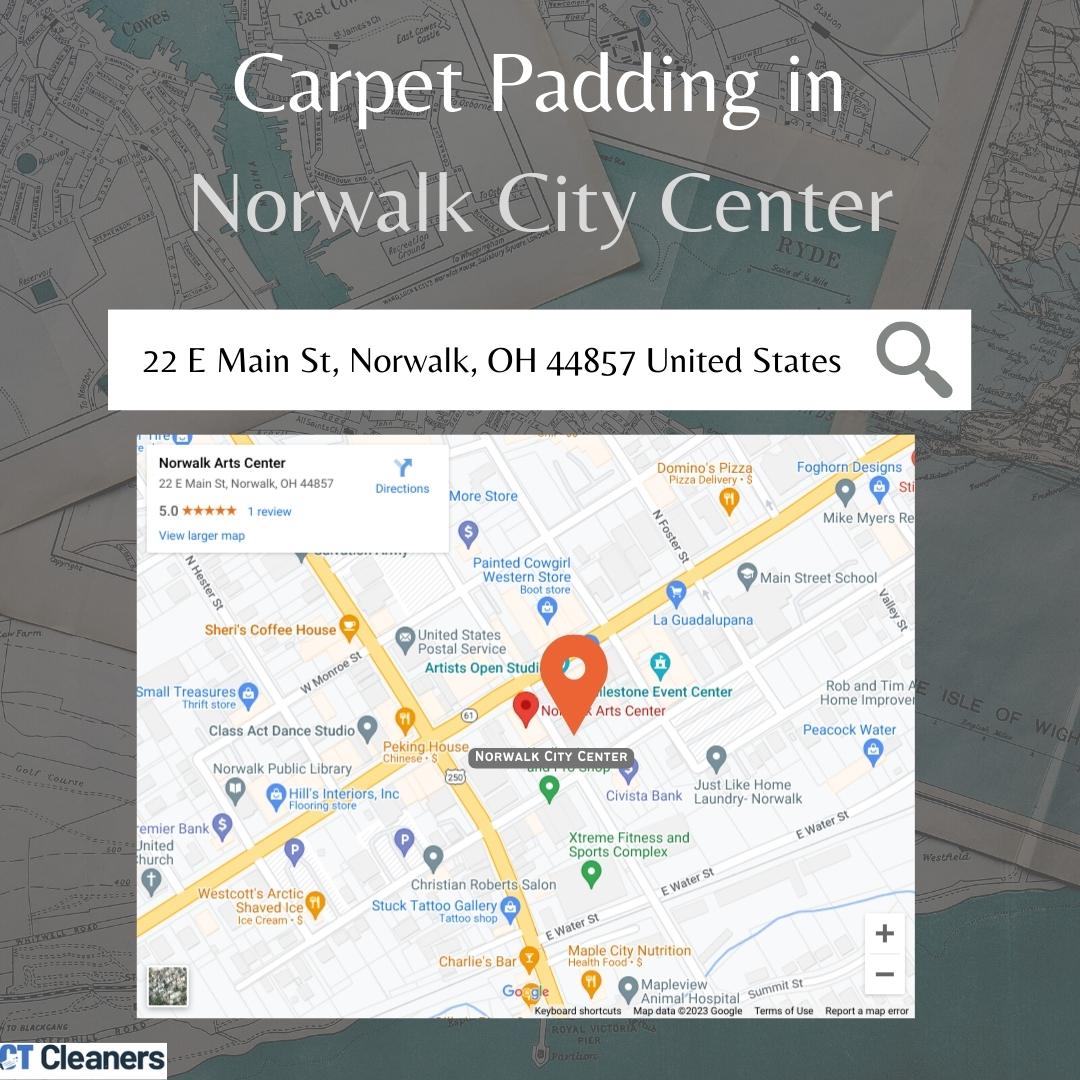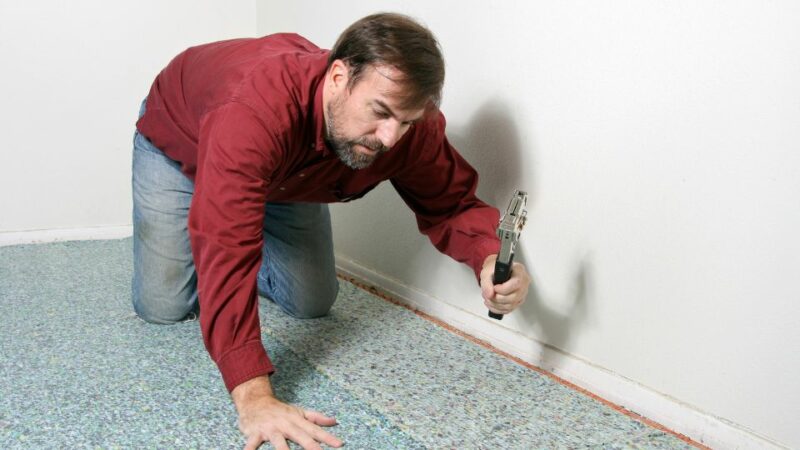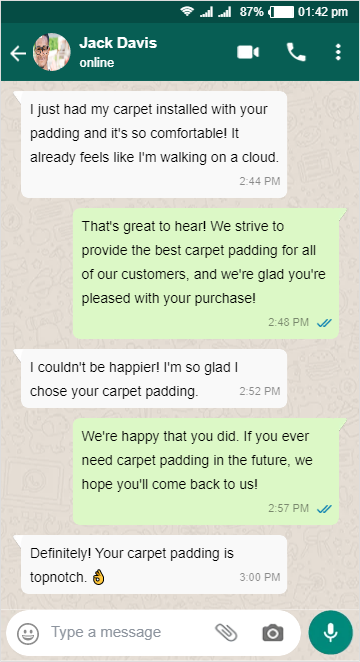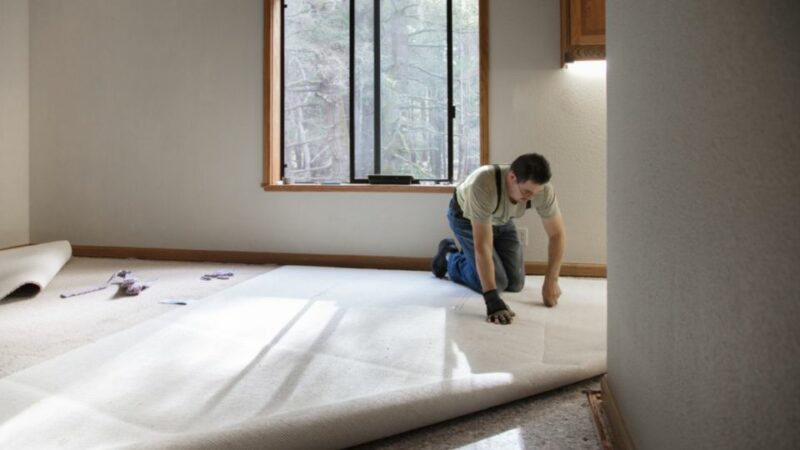Are you looking for the perfect carpet padding to finish off your Norwalk City Center home? We’ve got you covered! With a wide selection of carpet padding, from basic foam cushioning to more advanced options like memory foam and rubber underlayment, we can help you find the perfect solution for your needs.
Whether you’re looking for something to protect your carpets from wear and tear, or something to add an extra layer of insulation and soundproofing, we have the padding that will fit your needs. With our experienced staff on hand to provide advice and installation help, you can rest assured you’re getting the best quality carpet padding for your Norwalk City Center home. Come visit us today for all your carpet padding needs!
Definition of Carpet Padding and Its Purpose
Carpet padding, also known as carpet cushion or underlayment, is a layer of material placed between the carpet and the subfloor. Its purpose is to provide extra cushioning and support for the carpet, as well as to help prolong the life of the carpet by absorbing the impact of foot traffic and furniture.
Carpet padding acts as a shock absorber, reducing the amount of wear and tear on the carpet fibers. This can help to prolong the life of the carpet, making it last longer and look better for a longer period of time. The padding also helps to improve the overall comfort and feel of the carpet, making it softer and more pleasant to walk on.
In addition to its physical benefits, carpet padding also serves an important role in insulation and soundproofing. Carpet padding helps to insulate a room, keeping it warmer in the winter and cooler in the summer. It can also reduce the amount of noise that travels through the floor, making a room quieter and more peaceful.
How to Spot and Address Common Issues
Carpet padding, like any other material, can experience wear and tear over time. It’s important to regularly inspect your carpet padding for any issues and address them as soon as possible. Here are some common issues to look out for and how to address them:

It’s important to regularly inspect your carpet padding for any issues and address them as soon as possible. By addressing issues promptly, you can help to extend the life of your carpet padding and ensure that it continues to perform its functions properly.
Importance of Proper Carpet Padding in Norwalk City Center
Carpet padding is an essential component of any carpet installation, providing both physical and aesthetic benefits that help to enhance the overall look and feel of a room. In Norwalk City Center, where buildings are often close together, soundproofing is especially important. Properly installed and maintained carpet padding can significantly extend the life of carpets in Norwalk City Center. Importance of proper carpet padding in Norwalk City Center:
- Prolongs the life of carpets in the city center by absorbing the impact of foot traffic and furniture
- Helps to reduce noise levels and improve insulation
- Contributes to the aesthetic of a room, giving the illusion of a thicker and more luxurious carpet
- Essential in commercial spaces such as hotels, offices, and restaurants
- Helps to improve the overall comfort and feel of the carpet, making it softer and more pleasant to walk on.
Proper carpet padding is crucial in Norwalk City Center, as it helps to extend the life of carpets, reduce noise levels, improve insulation, and contribute to the aesthetic of a room. It is important to choose the right type of padding and have it installed and maintained correctly to ensure its optimal performance. By investing in proper carpet padding, property owners and managers in Norwalk City Center can ensure that their carpets will continue to look good and perform well for years to come. So, it’s worth considering investing in good-quality carpet padding for the longevity and comfort of your carpet.
Types of Carpet Padding
Carpet padding, also known as carpet cushion or underlayment, is a layer of material placed between the carpet and the subfloor. There are different types of carpet padding available, each with its own unique characteristics and benefits.
| Type | Description | Pros | Cons |
|---|---|---|---|
| Foam padding | Made from synthetic foam, usually polyurethane. Available in different densities and thicknesses. | Affordable, easy to install, good insulation properties | Can compress and lose support over time |
| Rubber padding | Made from recycled rubber, usually from car tires. Available in different thicknesses. | Durable, moisture-resistant, good insulation properties | Expensive can be heavy, and difficult to install |
| Waffle padding | Made from a combination of rubber and foam, with a unique waffle-like texture. | Durable, moisture-resistant, good insulation properties | More expensive than other types of padding |
There are different types of carpet padding available, each with its own unique characteristics and benefits. It’s important to consider the needs of your space and the usage of the carpet when choosing the right type of padding for your carpet installation.
“I am so pleased with the carpet padding services I received! The team was incredibly knowledgeable and helped me find the perfect carpet padding for my needs. It looks great, is comfortable to walk on, and is long-lasting. Highly recommend!”
– Audrey S., Norwalk City Center
Choosing the Right Carpet Padding
Choosing the right carpet padding is an important step in ensuring that your carpet installation is successful and long-lasting. There are several factors to consider when choosing the right type of padding, including room usage, foot traffic, and budget.
Room Usage: The usage of the room should be considered when choosing the right type of padding. For example, if the room is a high-traffic area, such as a living room or hallway, thicker and more durable padding may be needed. On the other hand, if the room is used less frequently, such as a guest room, thinner padding may be sufficient.
Foot Traffic: The amount of foot traffic that a room receives is also an important factor to consider when choosing the right type of padding. Rooms that receive a lot of foot traffic, such as a living room or hallway, will require thicker and more durable padding to withstand the wear and tear.
Budget: The budget is also an important factor to consider when choosing the right type of padding. Different types of padding have different price points, and it’s important to choose a padding that fits within your budget.
Measuring and Calculating: To calculate the amount of padding needed for a room, you will need to measure the area of the room in square feet. Once you have this measurement, you can use it to determine how much padding you will need. It’s important to note that most carpet padding is sold by the square yard, so you will need to convert your square footage measurement to square yards. It’s recommended to purchase extra padding to account for any cuts or waste.
Choosing the right carpet padding requires careful consideration of factors such as room usage, foot traffic, and budget. Proper measuring and calculating the amount of padding needed is also an important step in ensuring a successful carpet installation.

How to Properly Install Carpet Padding
Installing carpet padding is an important step in ensuring that your carpet installation is successful and long-lasting. Proper installation of the padding is essential in order to ensure that it performs its functions properly. Here is a step-by-step guide on how to properly install carpet padding:
- Start by preparing the subfloor. Make sure it is clean, dry, and level. This is an important step as any imperfections on the subfloor can affect the overall performance of the carpet padding.
- Measure the room and calculate the amount of padding needed. This will ensure that you have the correct amount of padding for your installation, and will also help you to plan for any cuts or waste.
- Unroll the padding and place it in the room, making sure it is centered and straight. This will ensure that the padding is properly aligned and that there are no wrinkles or bubbles.
- Use a utility knife to trim the padding to the correct size. This will ensure that the padding fits the room properly and that there are no overhangs or gaps.
- Use a carpet roller or a rolling pin to press the padding into place and eliminate any wrinkles or bubbles. This will ensure that the padding is properly secured to the subfloor and that it is lying flat.
- Use a carpet seam iron and seam tape to join multiple pieces of padding together, if needed. This will ensure that the seams are properly secured and that there are no gaps.
- Use a knee kicker to stretch the padding tight against the walls and tack it in place. This will ensure that the padding is properly secured to the walls and that it is lying flat.
Proper installation of carpet padding is essential in order to ensure that it performs its functions properly. By following these steps and ensuring that the subfloor is properly prepared, the correct amount of padding is used, and the padding is properly aligned, secured, and stretched, you can ensure that your carpet installation is successful and long-lasting. It is also important to note that carpet repair may be necessary in the future, and professional carpet repair services are available for this purpose.
Common Mistakes to Avoid
When installing carpet padding, it’s important to avoid common mistakes in order to ensure that the installation is successful and long-lasting. Here are some common mistakes to avoid when installing carpet padding:
- Not preparing the subfloor before installing the padding: This is an important step as any imperfections on the subfloor can affect the overall performance of the carpet padding.
- Not measuring and calculating the amount of padding needed: This will ensure that you have the correct amount of padding for your installation, and will also help you to plan for any cuts or waste.
- Not trimming the padding to the correct size: This will ensure that the padding fits the room properly and that there are no overhangs or gaps.
- Not using a carpet roller or a rolling pin to press the padding into place: This will ensure that the padding is properly secured to the subfloor and that it is lying flat.
By avoiding these common mistakes, you can ensure that your carpet padding installation is successful and long-lasting. Also, color correction should be done before installing the padding to make sure that it complements your carpet color. With color correction, you can create a look that is perfect for your space and style.
In conclusion, proper carpet padding is essential for ensuring the longevity and performance of carpets in Norwalk City Center. It acts as a buffer between the carpet and the subfloor, absorbing the impact of foot traffic and furniture, and protecting the carpet fibers from wear and tear. It also plays an important role in insulation and soundproofing, reducing noise levels and improving the overall comfort of a room.
Proper carpet padding can also contribute to the overall aesthetic of a room. A well-padded carpet can give the illusion of a thicker and more luxurious carpet, which can be especially beneficial in commercial spaces such as hotels, offices, or restaurants.
When it comes to choosing, installing, and maintaining carpet padding, it’s important to consider room usage, foot traffic, and budget, measuring and calculating the amount of padding needed and avoiding common mistakes. Regularly inspect your carpet padding for any issues and address them as soon as possible.









